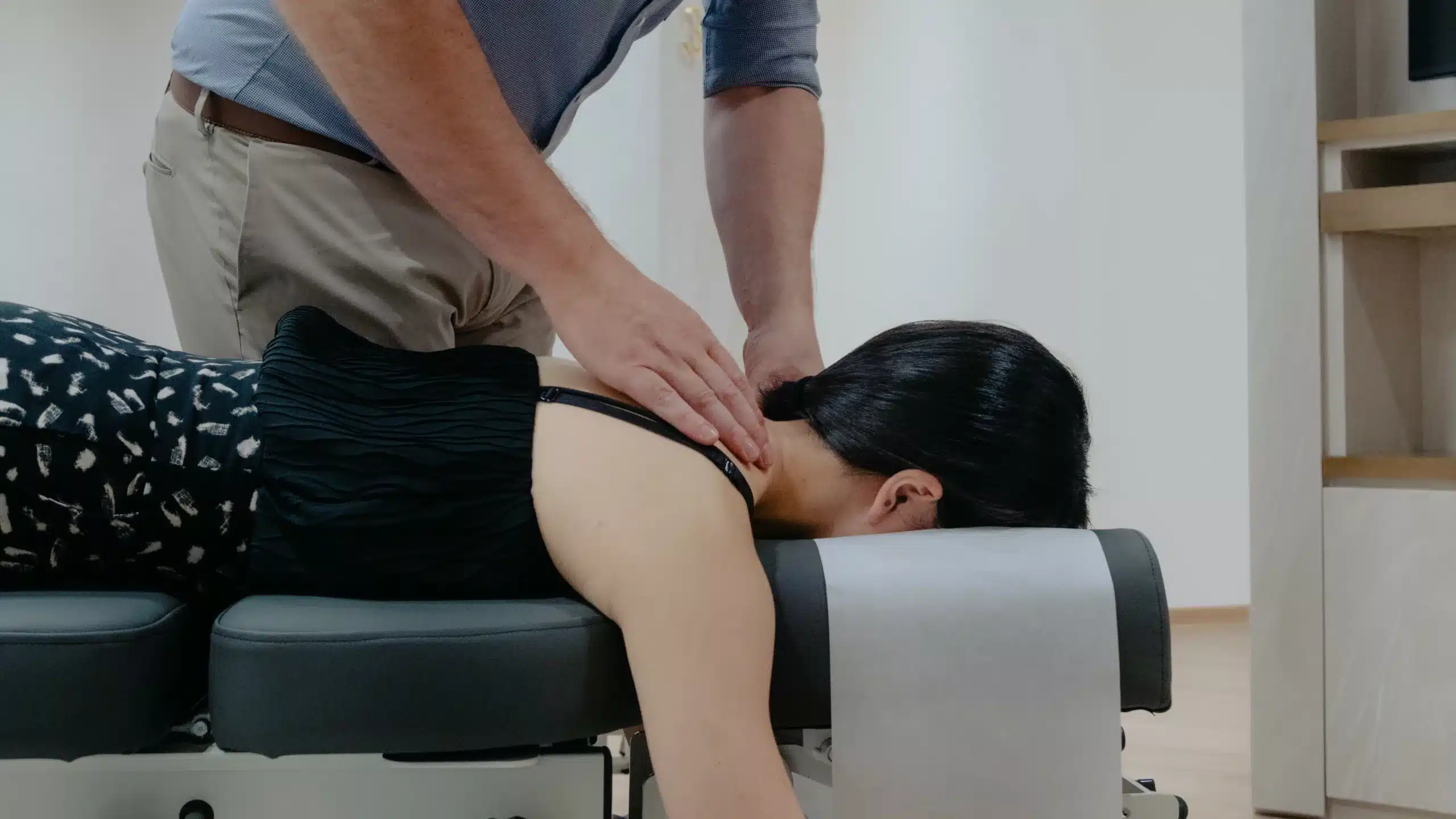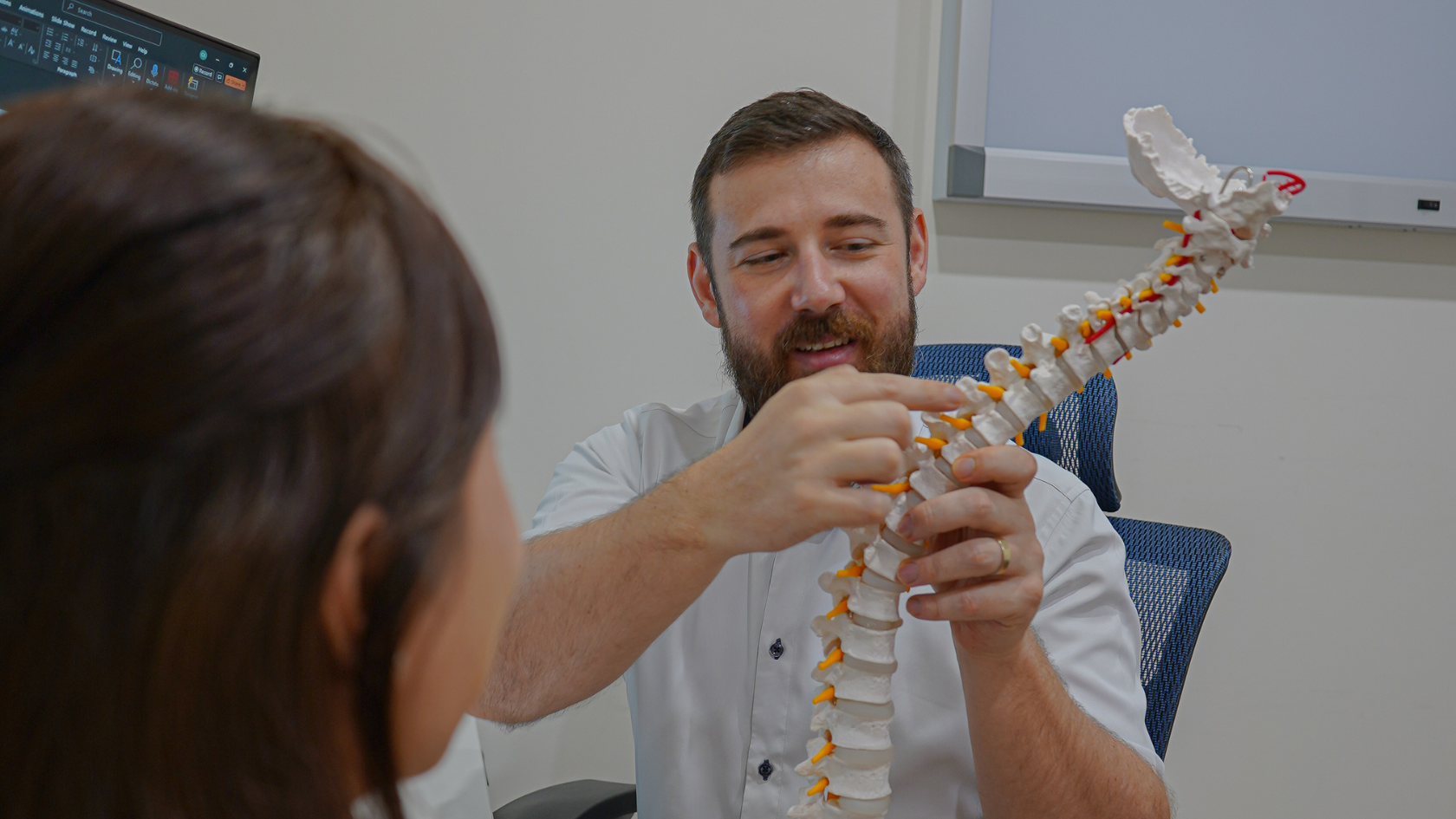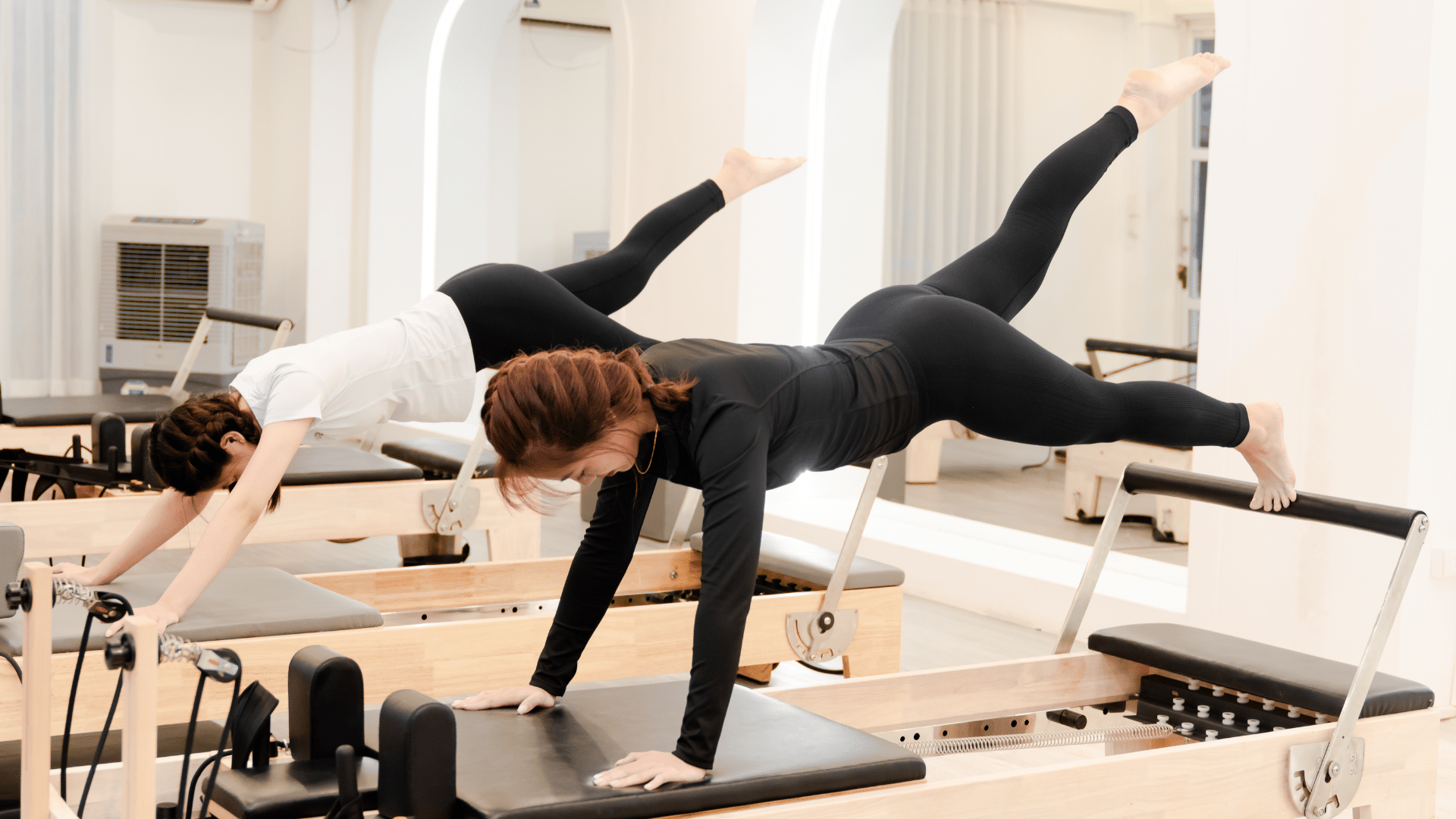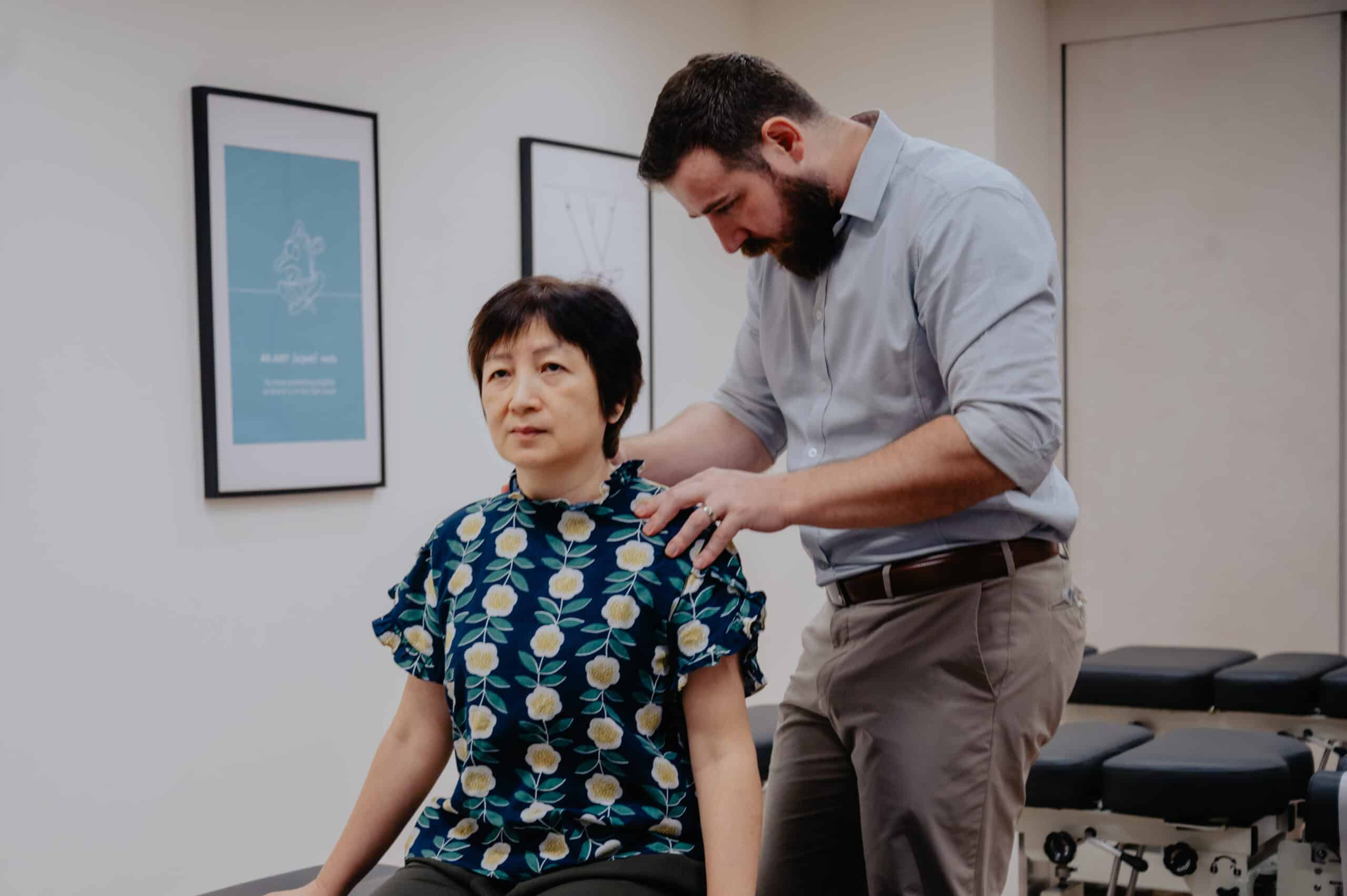In today’s digital age, it’s no surprise that many of us spend a significant amount of time hunched over our smartphones, tablets, and laptops. While these devices have undoubtedly transformed the way we work and communicate, they have also given rise to a modern ailment known as “tech neck” or “text neck.” If you’ve ever experienced neck and shoulder pain after a long day of scrolling through your phone or working on your laptop, you may be all too familiar with this condition. In this guide, we’ll explore what tech neck is, why it happens, and most importantly, how you can relieve the discomfort it causes.
What is tech neck (or text neck)?
Tech neck, also known as text neck, is a term used to describe the pain and strain that results from frequently looking down at electronic devices such as smartphones and tablets. This posture places excessive stress on the neck and spine, leading to discomfort and pain. With the prevalence of digital devices in our daily lives, tech neck has become an increasingly common problem.
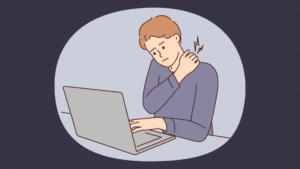
The human head is a remarkable structure, but it becomes a heavy burden when we tilt it forward to view our screens. On average, the adult human head weighs around 10-12 pounds (4.5-5.4 kilograms). However, the angle at which we hold our heads while using devices can increase the effective weight the neck and spine have to support. For instance, at a 30-degree angle, the head effectively feels like it weighs 40 pounds (18 kilograms), and at a 60-degree angle, it’s akin to a whopping 60 pounds (27 kilograms).
As we maintain this head-down posture for extended periods, the strain on our neck muscles, ligaments, and spinal discs increases, resulting in the characteristic pain and discomfort associated with tech neck.
Why does my neck hurt from using my phone?
If you’ve ever found yourself wondering why your neck aches after a prolonged smartphone session, it’s important to understand the mechanics at play. The primary reasons your neck hurts from using your phone are:
1. Poor posture
The most significant contributor to tech neck is undoubtedly poor posture. When using your smartphone, it’s natural to tilt your head downward to see the screen clearly. Over time, this constant forward bending places excessive stress on your neck and upper spine, causing muscle strain and discomfort.
Tip: Read our article to find out ways to check your child’s posture.
2. Overuse of devices
We are living in an age of constant connectivity, and many of us are guilty of overusing our devices. Whether it’s checking social media, texting, or watching videos, the more time you spend on your phone, the greater the risk of developing tech neck.
3. Repetitive movements
Typing, swiping, and scrolling on your phone or tablet involve repetitive movements that can strain the muscles and tendons in your neck and shoulders. This strain can lead to discomfort and pain, especially when these actions are performed for extended periods.
4. Screen height
The height at which you hold your smartphone also plays a significant role in the development of tech neck. Holding your device too low forces you to bend your neck even further, increasing the strain on your neck and upper back.
Why is using a laptop causing my neck pain?
Tech neck isn’t limited to smartphone users; laptop users are also at risk. Laptops present unique challenges when it comes to neck and shoulder pain. Here’s why using a laptop can cause neck pain:
1. Screen position
Laptop screens are typically lower than eye level, which encourages users to bend their necks forward while working. This posture places strain on the neck and upper back, leading to discomfort and pain.
2. Lack of ergonomic set-up
Unlike desktop computers, laptops are less ergonomic in terms of screen height and keyboard placement. This makes it difficult to maintain a neutral posture, which is essential for preventing neck and shoulder pain.
3. Prolonged usage
Laptop users often spend long hours working or browsing the internet, leading to extended periods of poor posture. Over time, this can lead to the development of tech neck symptoms.
Can tech neck cause headaches?
Yes, tech neck can indeed cause headaches. The connection between neck pain and headaches is well-established. When the muscles and ligaments in your neck are strained, they can refer pain to the head and trigger tension headaches.
Additionally, the posture associated with tech neck can restrict blood flow to the head, potentially causing vascular headaches. The tension in the neck and shoulders can also lead to cervicogenic headaches, which originate from issues in the neck.
It’s important to note that not everyone who experiences tech neck will develop headaches, but it’s a common symptom for many individuals. If you find yourself experiencing frequent headaches alongside neck and shoulder pain, addressing your tech neck issues may alleviate these symptoms.
How to relieve pain from tech neck
Relieving pain from tech neck involves a combination of lifestyle changes, postural adjustments, and self-care practices. Here are some effective strategies to help you find relief from tech neck discomfort:
1. Be mindful of posture
The first step in relieving tech neck pain is to be conscious of your posture while using electronic devices. Keep your head up, and your device at eye level whenever possible. This reduces the strain on your neck and upper back.
2. Take breaks
Frequent breaks from device usage can significantly reduce the risk of tech neck. Follow the 20-20-20 rule: every 20 minutes, take a 20-second break, and focus on something at least 20 feet away. This simple habit can help relax your eye muscles and reduce neck strain.
3. Ergonomic set-up
If you use a laptop for work or leisure, invest in an external keyboard and adjustable laptop stand. This allows you to create a more ergonomic workspace with the laptop screen at eye level and the keyboard at a comfortable height.
4. Use voice commands
Whenever possible, use voice commands or a hands-free device to reduce the need for prolonged smartphone usage. This can help mitigate the strain on your neck.
5. Mindful smartphone use
Limit your screen time on your smartphone and be mindful of your device usage. Try to use it for essential tasks and set boundaries for social media and non-essential activities.
What are some exercises or stretches that I can do to help tech neck?
In addition to the general tips mentioned above, specific exercises and stretches can be incredibly beneficial for addressing tech neck. Let’s take a closer look at some of these exercises:
1. Chin tucks
- Sit or stand with your head in a neutral position.
- Gently tuck your chin in towards your neck, without tilting your head up or down.
- Hold for 5-10 seconds, and then release.
- Repeat this 10-15 times.
2. Shoulder rolls
- Sit or stand with a neutral spine and your hands on your sides.
- While looking forward, lift your shoulders to your ears without slouching forward.
- Pull your shoulders back, squeezing your shoulder blades together.
- Bring your shoulders back down to neutral position.
3. Scapular squeezes
- Sit or stand with your arms by your sides.
- Squeeze your shoulder blades together as if you’re trying to hold a pencil between them.
- Hold for 5 seconds and then relax.
- Repeat this 10-15 times.
4. Neck flexion stretch
- Sit or stand with your head in a neutral position.
- Slowly tilt your head forward, bringing your chin toward your chest.
- Hold for 15-30 seconds.
- Gently return your head to the neutral position.
- Repeat this stretch 2-3 times.
5. Neck extension stretch
- Sit or stand with your head in a neutral position.
- Gently tilt your head backward, looking towards the ceiling.
- Hold for 15-30 seconds.
- Slowly return your head to the neutral position.
- Repeat this stretch 2-3 times.
6. Levator scapulae stretch
- Sit or stand with your head in a neutral position.
- Turn your head to the side, bringing your ear towards your shoulder.
- Use your hand to gently apply a bit of extra pressure, stretching the neck.
- Hold for 15-30 seconds on each side.
- Repeat 2-3 times on each side.
6. Chest opener stretch
- Stand with your feet hip-width apart.
- Interlace your fingers behind your back.
- Straighten your arms and lift them slightly while opening your chest.
- Hold for 15-30 seconds.
- Relax and repeat 2-3 times.
7. Child’s pose
- Start by kneeling on the floor with your knees hip-width apart and your toes touching.
- Lower your hips towards your heels, extending your arms in front of you.
- Relax your forehead on the floor and breathe deeply, feeling the stretch in your lower back and hips.
- Hold this pose for 30 seconds to one minute.
These exercises and stretches can help alleviate tech neck discomfort and improve your posture over time. Remember to perform them regularly and consult with a healthcare professional if you experience severe or persistent pain.
Can chiropractic care help with tech neck?

Chiropractic care is an alternative therapy that focuses on the diagnosis and management of musculoskeletal disorders, including those related to the neck and spine. It is often sought after for pain relief and posture correction. Chiropractors use manual manipulation and other techniques to realign the spine and improve the function of the musculoskeletal system. Here are some ways chiropractic care may help with tech neck:
1. Spinal adjustments
Chiropractors can perform spinal adjustments to correct misalignments in the spine. These adjustments can reduce tension and improve the range of motion in the neck and upper back.
2. Postural assessment
Chiropractors can conduct a thorough postural assessment to identify issues related to poor posture. They can then provide guidance on improving posture and ergonomics, which can be especially beneficial for tech neck sufferers.
3. Soft tissue therapy
Chiropractors may use soft tissue therapies like massage and myofascial release to alleviate muscle tension and discomfort in the neck and shoulders.
4. Lifestyle advice
Chiropractors can offer advice on lifestyle modifications, including exercises and stretches, to help you manage and prevent tech neck.
It’s important to note that while many individuals find relief through chiropractic care, the effectiveness of adjustment can vary from person to person. If you’re considering chiropractic care for tech neck, it’s advisable to consult with a qualified chiropractor who can assess your condition and provide personalised recommendations.
Tech neck unplugged: Navigating the digital world with comfort and ease
Tech neck, or text neck, is a modern condition that can cause significant discomfort and pain in the neck and shoulders. Remember to maintain good posture, take regular breaks, and incorporate exercises and stretches into your daily routine. Your neck and shoulders will thank you for it!
Chiropractic care is also an option worth considering if you’re seeking professional assistance in managing tech neck. Keen to find out more if chiropractic care can help with tech neck? Book a chiropractic check-up with us now!


